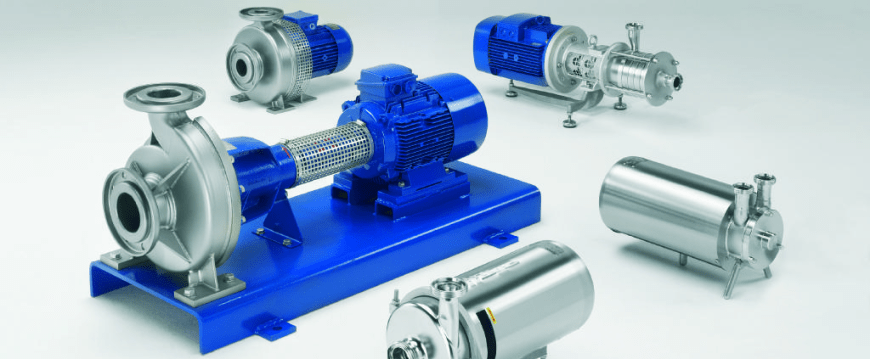
Choosing the right pump for your food production application is a critical decision that affects process efficiency, product quality and total cost of ownership. Each type of pump has its own unique characteristics, benefits and limitations. In this article, we will take a closer look at the four main types of pumps that are widely used in the food industry: screw, diaphragm, cam and centrifugal.
Screw pump
Screw pumps operate on the principle of moving fluid by the interaction of two or more screws. They are characterised by high efficiency, smooth flow and the ability to pump viscous liquids and mixtures containing solid particles. Due to their design features, screw pumps ensure gentle pumping of products, minimising damage to them.
Advantages:
- High efficiency
- Smooth flow
- Suitable for pumping viscous liquids and mixtures
- Gentle pumping of products
Disadvantages:
- Higher cost compared to other types of pumps
- Possibility of screws wearing out during long-term operation
Diaphragm pums
Diaphragm pumps operate on the principle of moving fluid through an oscillating diaphragm. They are distinguished by their high chemical resistance, ability to pump aggressive media and create high pressure. Diaphragm pumps are widely used for dosing and pumping small volumes of liquids.
Advantages:
- High chemical resistance
- Ability to pump aggressive media
- Ability to create high pressure
- Precise dosing
Disadvantages:
- Limited capacity
- Requirement for frequent membrane replacement
Lobe pump
Cam pumps operate on the principle of capturing and moving fluid between two rotating cams. They are characterised by high performance, self-priming and the ability to pump liquids with a large amount of gases. Cam pumps are widely used for pumping drinking water, dairy products and other food liquids.
Advantages:
- High performance
- Self-priming
- Capable of pumping liquids with gases
Disadvantages:
- Flow pulsations
- Possibility of cam wear
Centrifugal pump
Centrifugal pumps operate on the principle of converting the kinetic energy of a rotating wheel into the potential energy of the fluid. They are characterised by high performance, compact size and simple design. Centrifugal pumps are widely used for pumping large volumes of liquids with low viscosity.
Advantages:
- High performance
- Compact dimensions
- Simplicity of construction
Disadvantages:
- Low efficiency when pumping viscous liquids
- Inability to self-priming
Conclusion
Choosing the right pump is an important step in the design and equipment of food production facilities. Each type of pump has its own advantages and limitations, so you need to carefully analyse all the factors before making a decision.